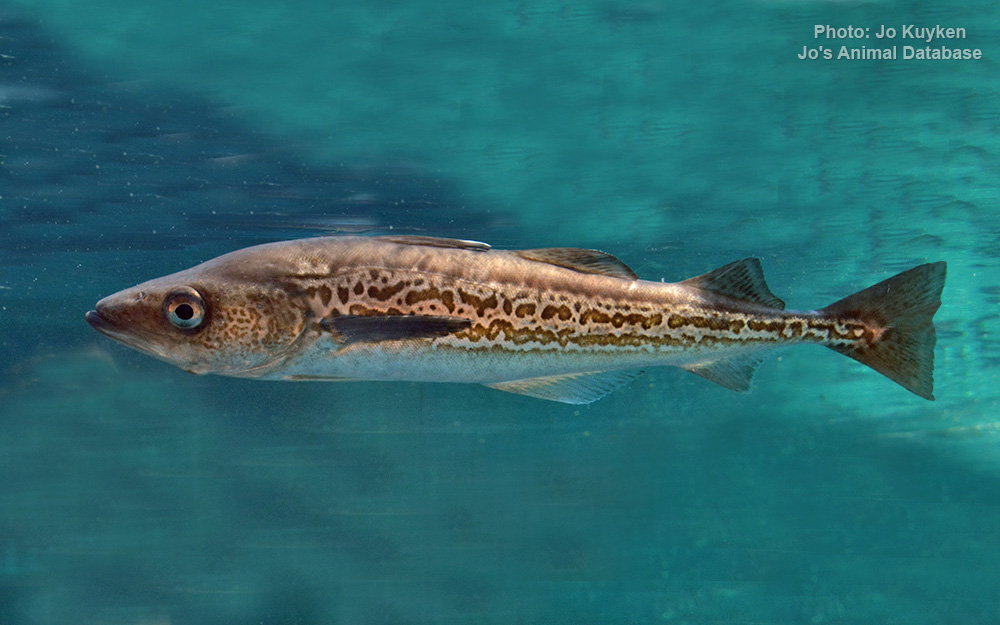Alaska pollock
(Gadus chalcogrammus)

Image source: Jo's Animal Database
Classification
General data
Max length: 91 cm TL; max. published weight: 3.9 kg
Dorsal spines (total): 0; Dorsal soft rays (total): 38-48; Anal spines: 0; Anal soft rays: 33 - 42.
The dorsal fins are widely separated. The pelvic fins have a slightly elongated filament. The lateral line is continuous to about the back end of the first dorsal-fin base; it is interrupted at the read of the body. On the head are lateral line pores. Body color is olive green to brown on the back and becomes silvery on the sides and pale ventrally, often with mottled patterns or blotches.
Pacific Ocean
The main habitats are the coastal areas of the Northern Pacific, especially the waters off Alaska (Eastern Bering Sea, Gulf of Alaska, Aleutian Islands) as well as off Russia, Japan and Korea (Western Bering Sea and Sea of Okhotsk). The largest concentrations of Alaska pollock are found in the eastern Bering Sea.
Small populations in the Arctic Ocean (Barents Sea)
Very small populations of fish genetically identical to Gadus chalcogrammus are found in the Barents Sea waters of northern Norway and Russia. This fish was initially described as its own species under the taxon Theragra finnmarchica by Norwegian zoologist Einar Koefoed in 1956. The common name used for the fish was Norway pollock. Genetic analyses have shown that the fish is genetically identical to the Alaska pollock. It is therefore considered to be conspecific with the Pacific species and is attributed to Gadus chalcogrammus. The history of the species in the Barents Sea is unknown.










